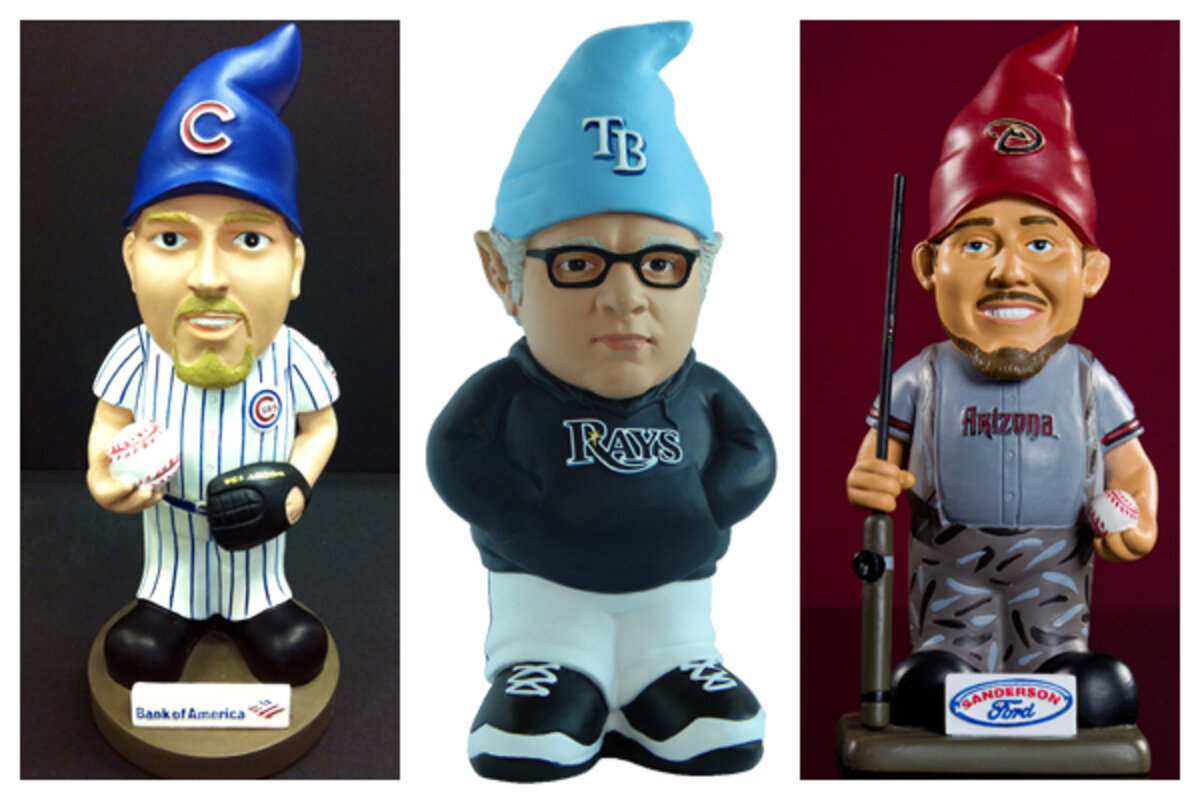• Acknowledging men and women in uniform for their military service is done by many teams. The Twins, for example, offer half-price seats to active military members or veterans with a valid ID or discharge papers. By far, however, the San Diego Padres are the most military friendly team, owing to large numbers of service personnel in the city. They have 11 separate military promotions that salute the various branches of the service, the National Guard, and the spouses and children of those in the armed forces.
• Gnome figurines, whether for use in a garden or just to display around the house, have caught on as desirable collectibles – a fun change of pace from bobbleheads.
• Sponsors have long used ballpark giveaways and promotions to get their names in front of fans. And while their funding or partial funding of these is nothing new, the introduction of gambling interests into the mix is a growing and rather perplexing (some might say troubling) development. Major League Baseball mostly tries to keep its distance from the gambling world (note that Pete Rose is still banned from Major League Baseball and the Hall of Fame because of his gambling on games). Nevertheless, about a dozen teams have casinos as sponsors for special ballpark events. Maybe most suggestive is the Mets Aug. 3 giveaway of 25,000 decks of playing cards in a promotion sponsored by Caesars, the gaming, hotel, and resort company.
• Replica championship rings and scale-model player awards have become popular. Perhaps the most prized this year will be the facsimiles of the World Series rings won by the San Francisco Giants. They will come in one size only.
• Toy vehicles, and even train engines offered by one team, have become popular collectibles. The Mets, Yankees, and Phillies will give away trucks this season. The Seattle Mariners, which began giving out die-cast train cars in 2000, will issue the 13th in the series on Train Engine Night. The club calls this a legacy giveaway since it pays tribute to the trains that pass by Safeco Field 90 times a day. The sound of train horns is considered the ballpark’s signature sound.
• The idea of using the area outside ballparks for street festivals continues to catch on. An example are the Rally Alley events on Cleveland’s Doby Way (named for former star Larry Doby). As is typical of such festivals, there is live music, street performers, ballpark fare, and, in Cleveland’s case, autograph sessions with ex-players. The Red Sox block off Yawkey Way and turn it into a veritable carnival before every home game, with a stilt-walker, juggler, balloon artist, caricature artist, and the Hot Tamales Brass Band.
• Many teams let kids run the bases after games. The New York Mets also hold a Senior Stroll for fans age 60 and over.
• While baseball doubleheaders are virtually extinct at this point, the idea of a double feature isn’t. Numerous teams offer postgame concerts. The Miami Marlins, for example, have concerts after every Saturday night game. Detroit has a Motown Night concert and Toronto a Country Music Night. Also popular are family-style faith concerts with music by Christian groups. The Arizona Diamondbacks have a Band Night, in which a host of school bands put on a pregame performance.







